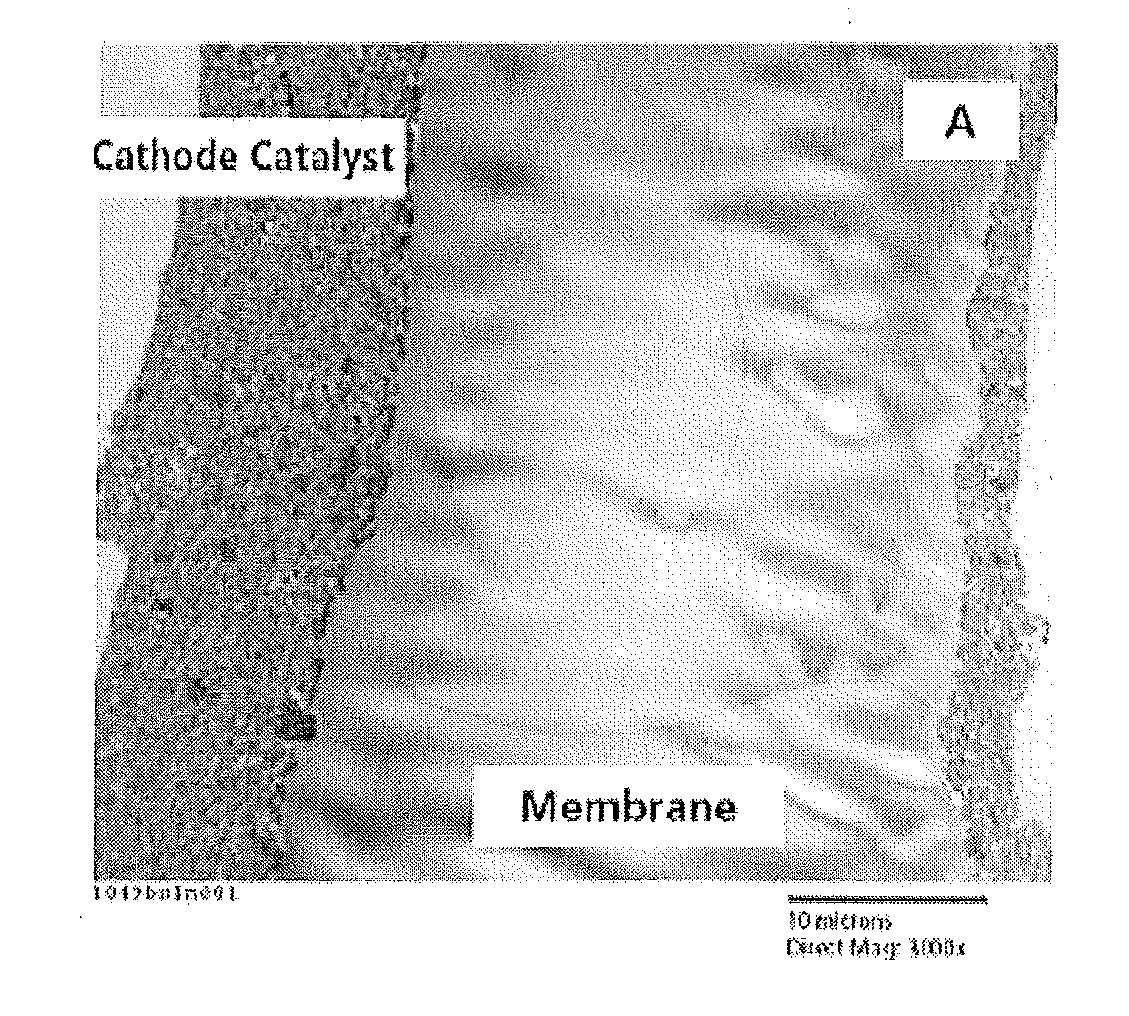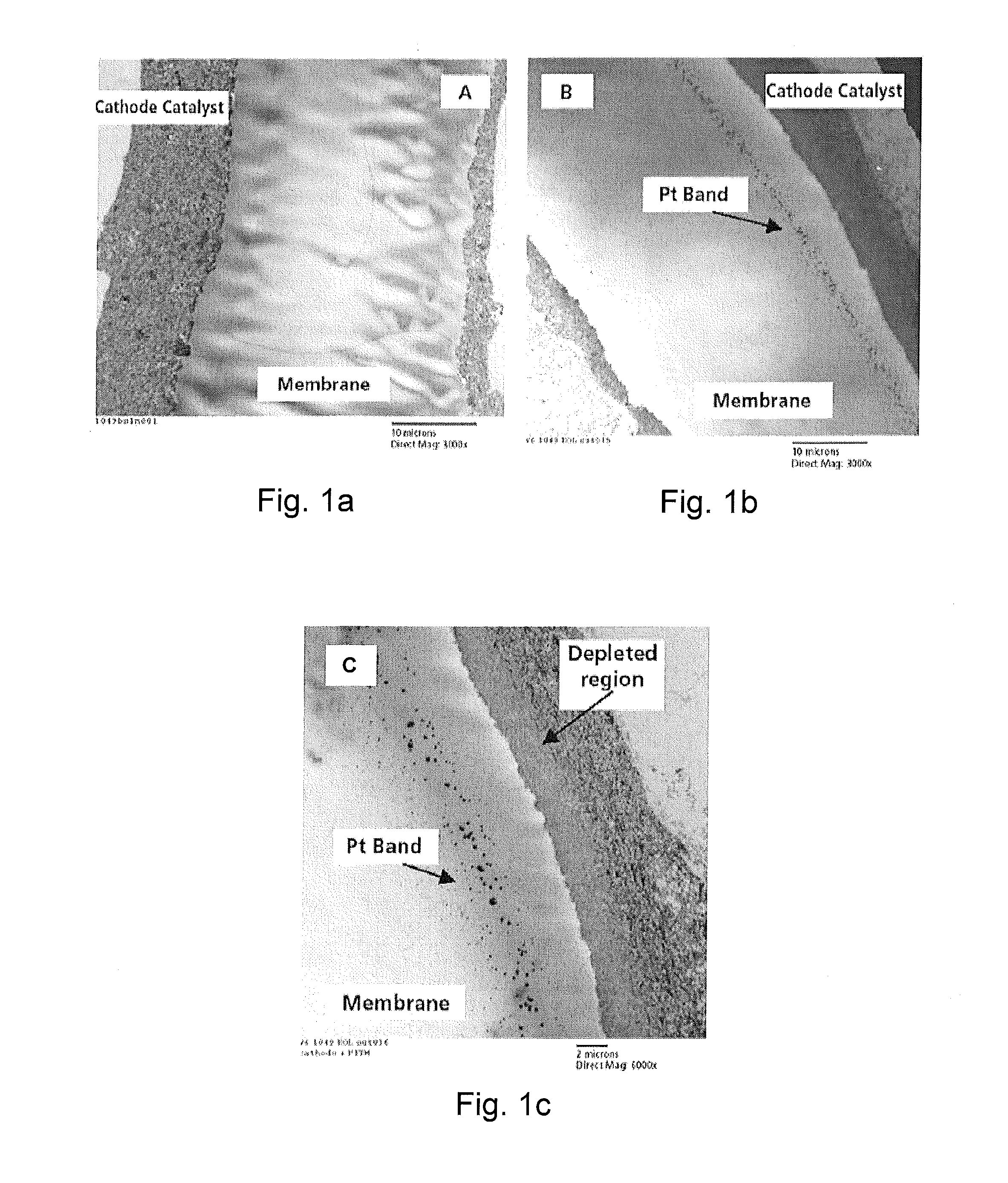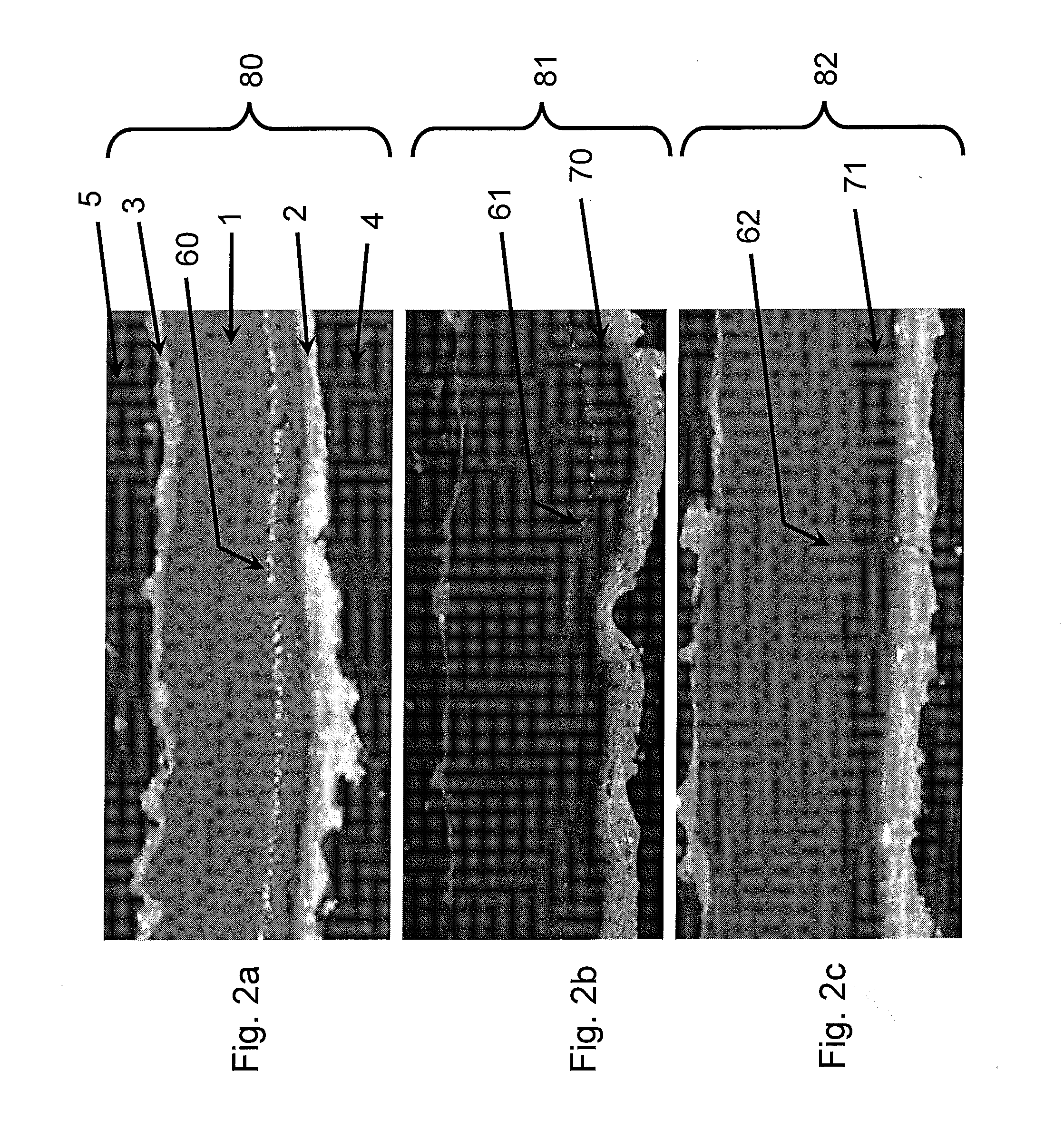Membrane electrode assembly comprising a catalyst migration barrier layer
a technology of migration barrier layer and membrane electrode, which is applied in the field of membrane electrode assembly, can solve the problems of affecting the entire cell and system, limiting the lifetime of the membrane electrode assembly (mea) of a fuel cell, and significant part of the cost allotted to the expensive pt-catalyst material, so as to improve the mechanical strength of the porous ionomer containing layer, improve the interface, and improve the tortuosity of the porous
- Summary
- Abstract
- Description
- Claims
- Application Information
AI Technical Summary
Benefits of technology
Problems solved by technology
Method used
Image
Examples
example 1
Preparation of Membrane Electrode Assembly 80
[0062]MEA 80 was prepared according to well known standard procedures. A Nafion PFSA NRE-211 membrane from DuPont was used as proton exchange membrane. It was coated with 0.25 mg / cm2 Pt catalyst loading on the cathode and 0.05 mg / cm2 Pt catalyst loading on the anode, respectively. Microporous layers on hydrophobic Toray carbon paper were used as porous anode gas diffusion layer and porous cathode gas diffusion layer.
example 2
Preparation of Membrane Electrode Assemblies 81, 82
[0063]MEAs 81 and 82 were prepared by similar procedure as described for MEA 80. However, an additional coating step was introduced to form a layer between the ion exchange membrane 1 and the cathode electrocatalyst layer 2. The coating step was performed according to a standard procedure which is, for example, usually applied during routine MEA coating steps. Said standard procedure is well known to those skilled in the art.
example 3
Assembly of Test Stacks
[0064]Three Ten-cell stacks were assembled using either MEA 80, or MEA 81, or MEA 82. The electrochemical active area of each unit fuel cell was 48.4 cm2. A subscale hardware was used in each case, i.e. carbon bipolar plate having straight parallel fuel and oxidant channels, respectively.
PUM
| Property | Measurement | Unit |
|---|---|---|
| electrically conductive | aaaaa | aaaaa |
| durability | aaaaa | aaaaa |
| loss of power | aaaaa | aaaaa |
Abstract
Description
Claims
Application Information
 Login to View More
Login to View More - R&D
- Intellectual Property
- Life Sciences
- Materials
- Tech Scout
- Unparalleled Data Quality
- Higher Quality Content
- 60% Fewer Hallucinations
Browse by: Latest US Patents, China's latest patents, Technical Efficacy Thesaurus, Application Domain, Technology Topic, Popular Technical Reports.
© 2025 PatSnap. All rights reserved.Legal|Privacy policy|Modern Slavery Act Transparency Statement|Sitemap|About US| Contact US: help@patsnap.com



